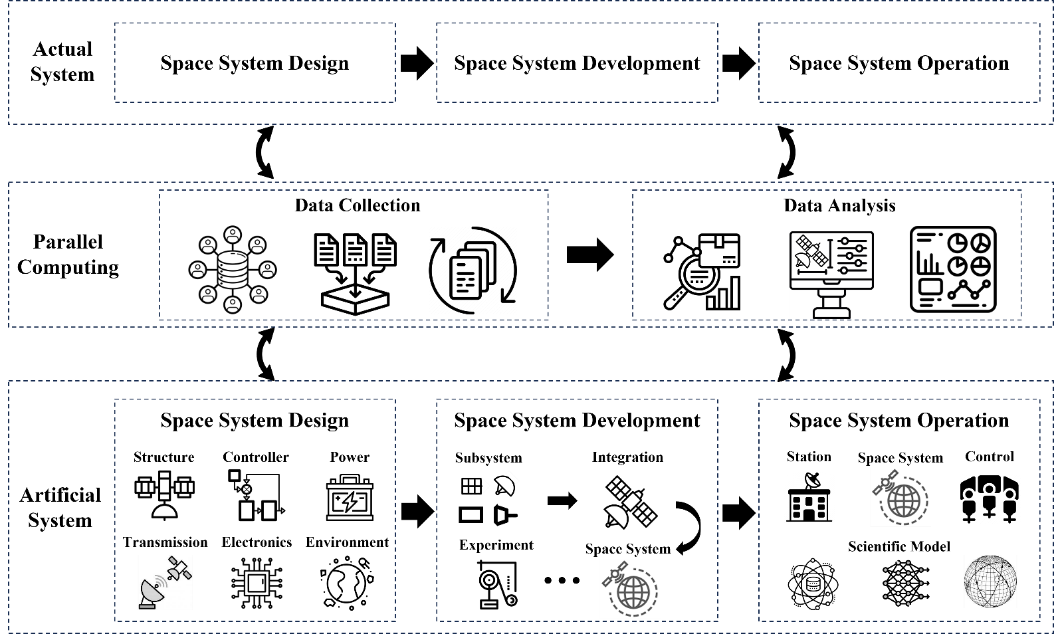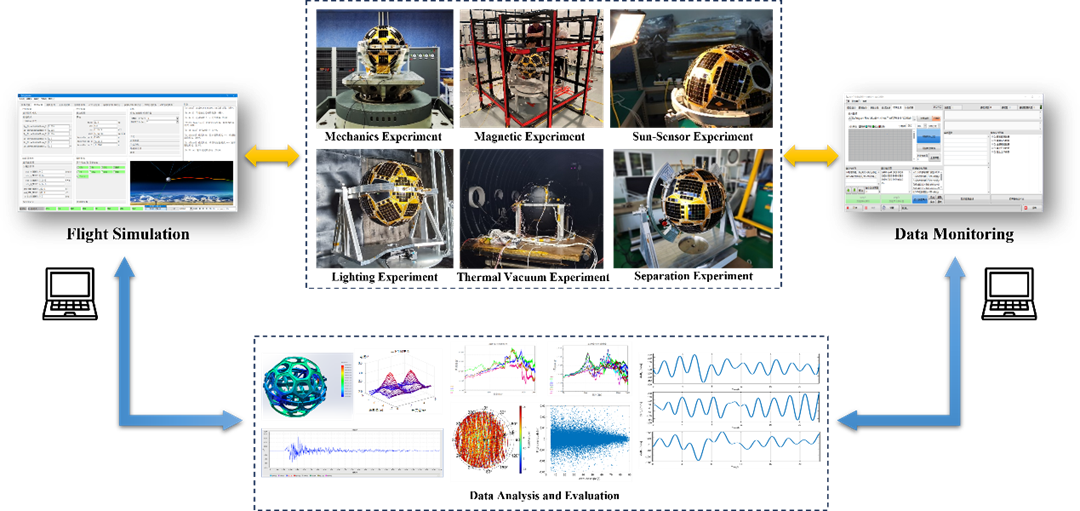Author: Cai Yingkai, Meng Qingliang, Wang Zhaokui
Journal: International Journal of Aerospace Engineering
DOI: https://doi.org/10.1155/1970/4650731
Introduction: The evolution of space missions demands innovative approaches to tackle the complexity of designing, developing, and operating advanced space systems. Traditional methodologies, while foundational, often do not fully address the intricate challenges these systems present. We propose a transformative solution: the ACP (Artificial systems, Computational experiments, Parallel execution)-based space systems architecture. This novel framework promises to redefine how we approach space technology, paving the way for a new era of exploration and innovation.
ACP-Based Space Systems: At the heart of this pioneering approach is the integration of artificial systems with their real-world counterparts, coupled with the strategic use of computational experiments. This synergy generates a wealth of data, optimizing the actual space systems and refining artificial models in a parallel fashion. The ACP framework heralds a significant leap in space system lifecycle management, offering a holistic solution that enhances accuracy, performance, and adaptability.

Fig. 1 Parallel space systems.
Applications on Q-Sat: The development and operation of Q-Sat, a microsatellite designed by Tsinghua University, exemplifies the practical application and benefits of the ACP-based framework. Q-Sat's mission objectives, including detecting Earth's gravity field and upper atmosphere density, provided a unique opportunity to implement and test the ACP architecture. The results speak volumes, with notable improvements in orbit compensation accuracy and predictive capabilities, underscoring the framework's effectiveness in real-world space missions.

Fig. 2 Q-Sat subsystem parallel development process.
Future Perspective: The future of parallel space systems hinges on three key trends: digitization, which will turn physical systems into digital models for enhanced precision and efficiency; integration, merging real and artificial systems for improved mission execution; and adaptability, using AI and machine learning for systems to evolve with changing mission needs. These advancements promise to revolutionize space exploration, making missions more efficient, effective, and adaptable to new challenges.
Conclusion: The present study establishes a parallel space systems architecture based on ACP, proposing the concept of parallel design, development, and operation for different stages of space systems. The design, development, and operation process of Q-Sat based on ACP are presented, along with an analysis of the advantages of parallel space systems. This research provides valuable insights into the potential of parallel space systems and sets the stage for further advancements in the field.
Reference
[1] Cai Y, Meng Q, Wang Z. ACP-Based Space Systems: Design, Development and Operation[J].
International Journal of Aerospace Engineering, 2024.